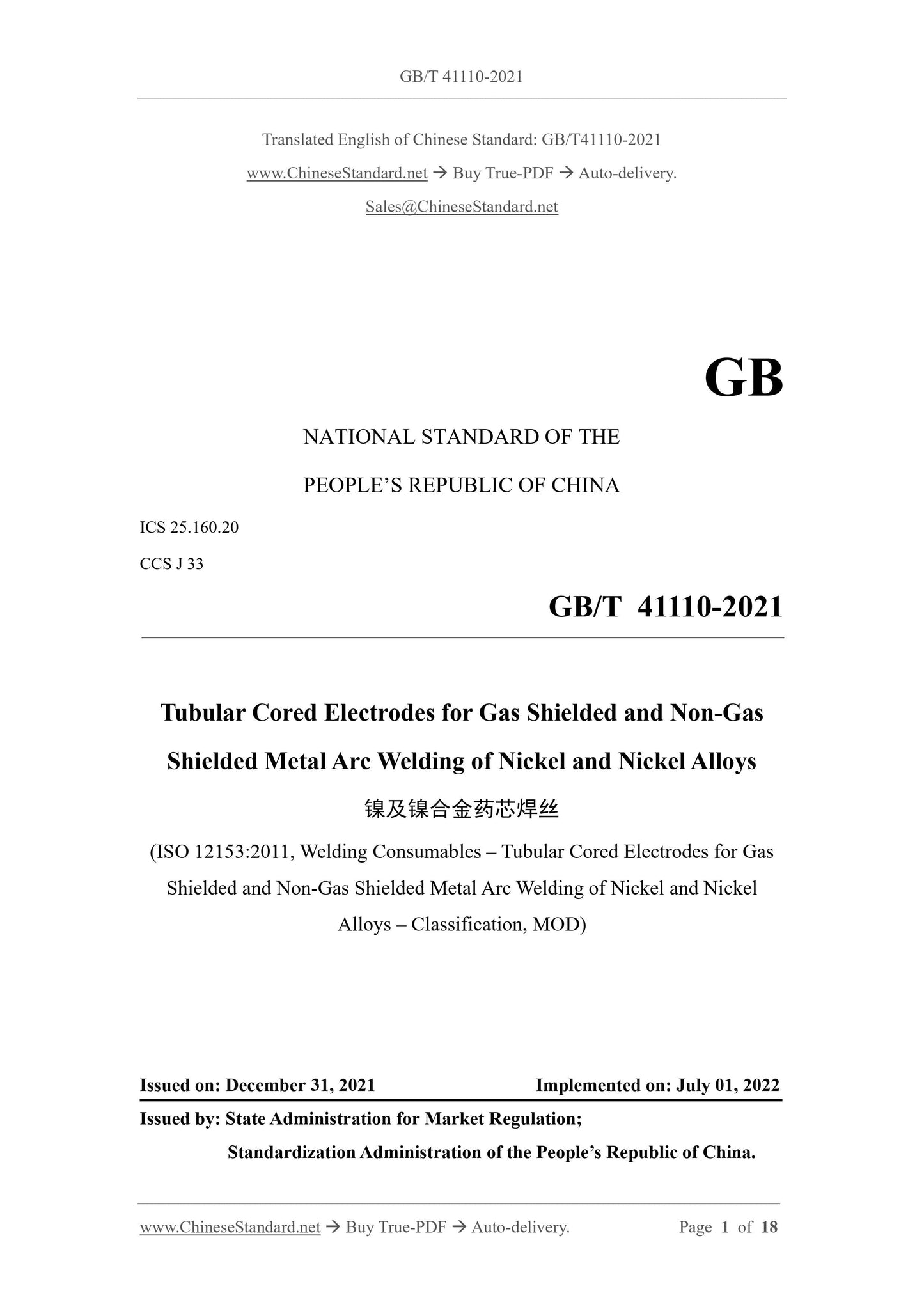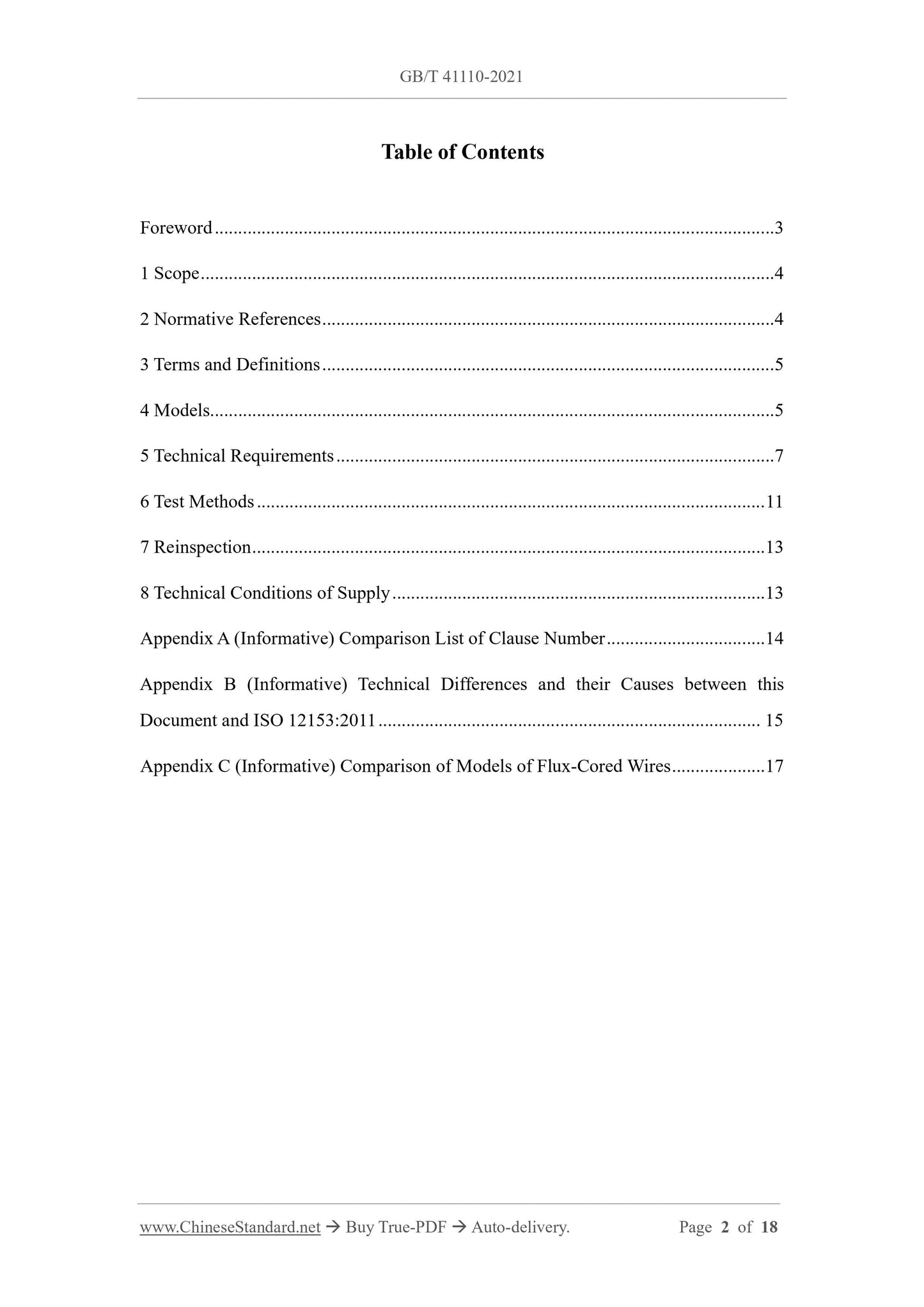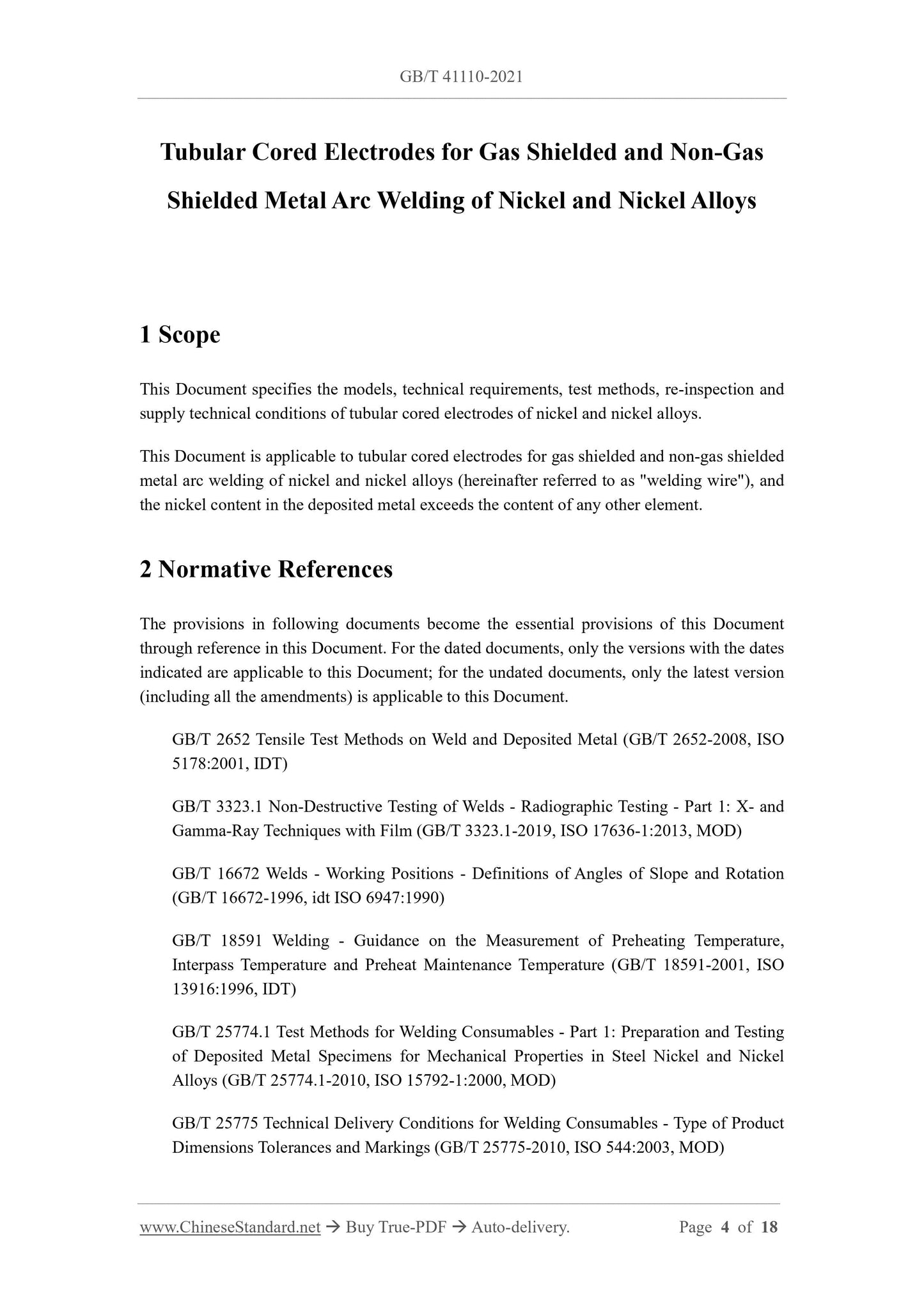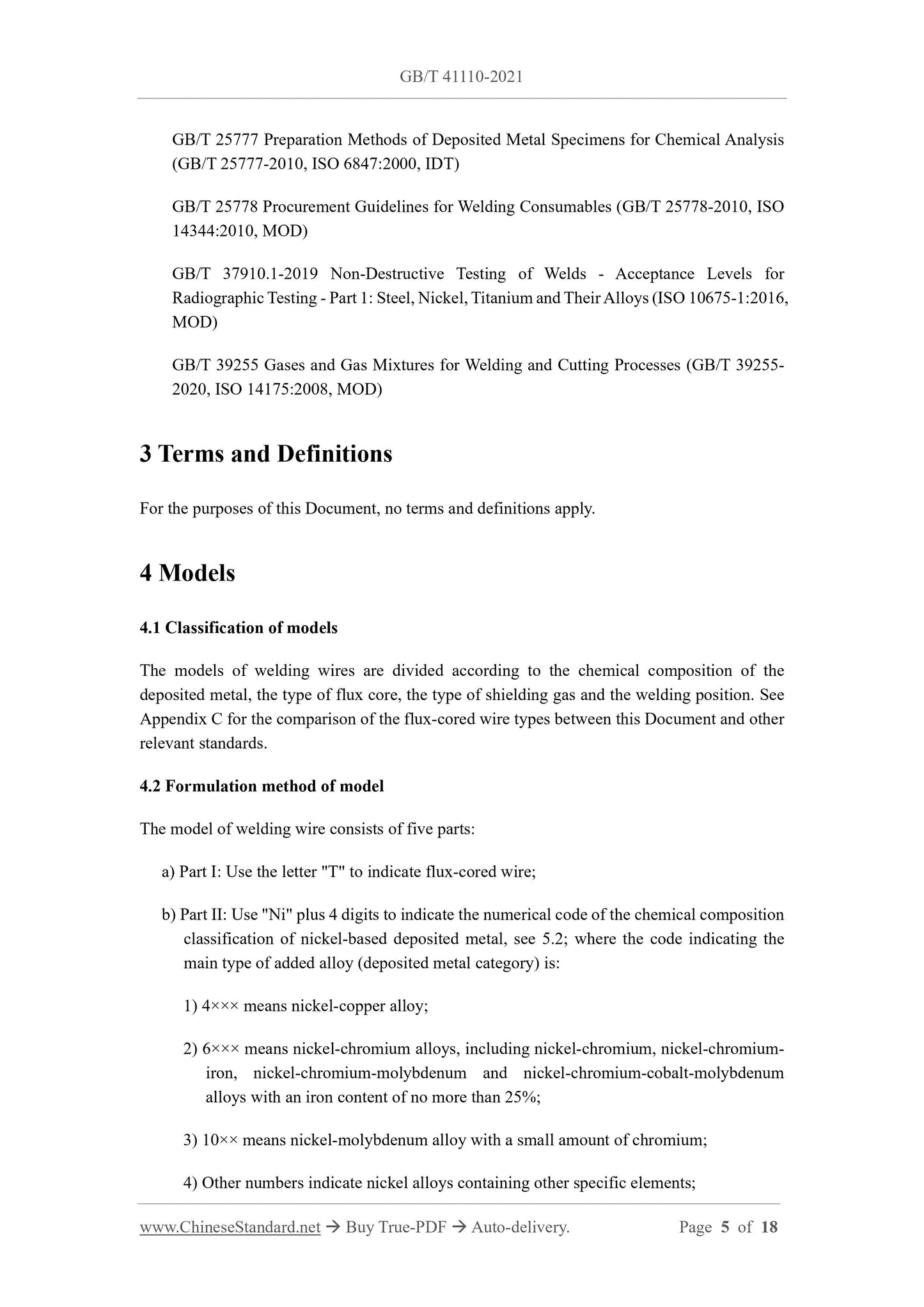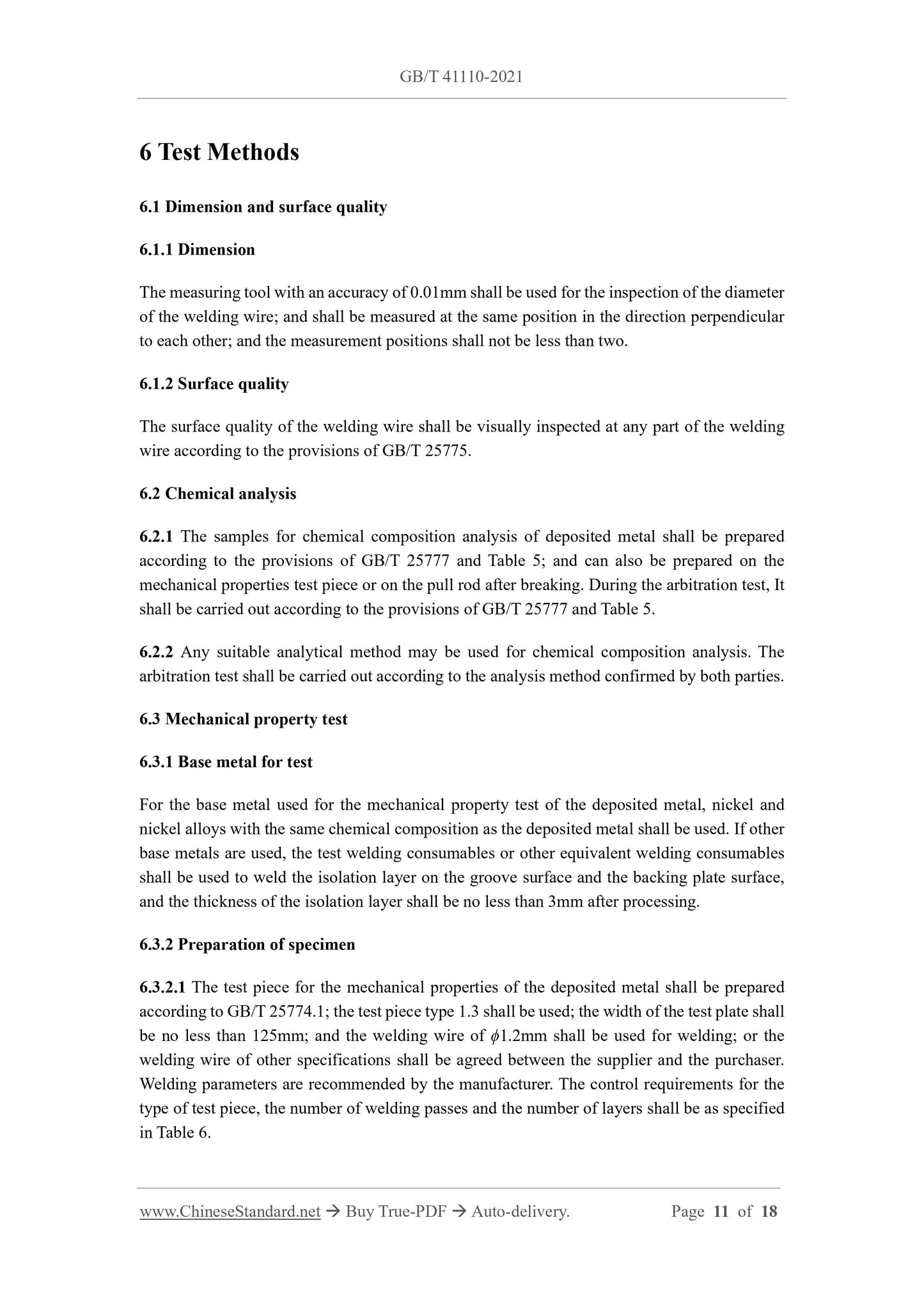1
/
of
5
www.ChineseStandard.us -- Field Test Asia Pte. Ltd.
GB/T 41110-2021 English PDF (GB/T41110-2021)
GB/T 41110-2021 English PDF (GB/T41110-2021)
Regular price
$260.00
Regular price
Sale price
$260.00
Unit price
/
per
Shipping calculated at checkout.
Couldn't load pickup availability
GB/T 41110-2021: Tubular cored electrodes for gas shielded and non-gas shielded metal arc welding of nickel and nickel alloys
Delivery: 9 seconds. Download (and Email) true-PDF + Invoice.Get Quotation: Click GB/T 41110-2021 (Self-service in 1-minute)
Newer / historical versions: GB/T 41110-2021
Preview True-PDF
Scope
This Document specifies the models, technical requirements, test methods, re-inspection andsupply technical conditions of tubular cored electrodes of nickel and nickel alloys.
This Document is applicable to tubular cored electrodes for gas shielded and non-gas shielded
metal arc welding of nickel and nickel alloys (hereinafter referred to as "welding wire"), and
the nickel content in the deposited metal exceeds the content of any other element.
Basic Data
| Standard ID | GB/T 41110-2021 (GB/T41110-2021) |
| Description (Translated English) | Tubular cored electrodes for gas shielded and non-gas shielded metal arc welding of nickel and nickel alloys |
| Sector / Industry | National Standard (Recommended) |
| Classification of Chinese Standard | J33 |
| Word Count Estimation | 16,138 |
| Issuing agency(ies) | State Administration for Market Regulation, China National Standardization Administration |
Share
